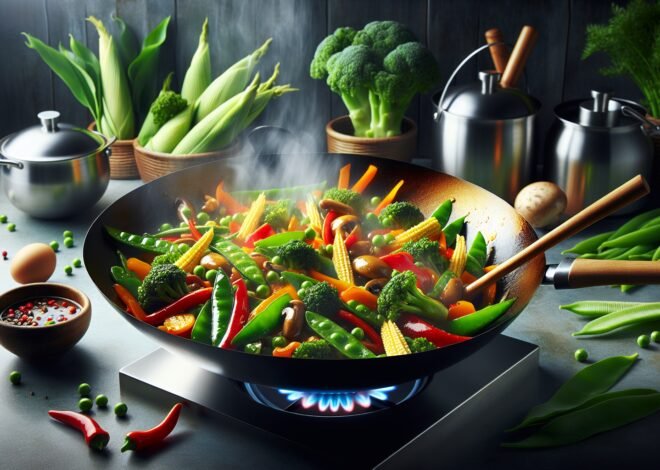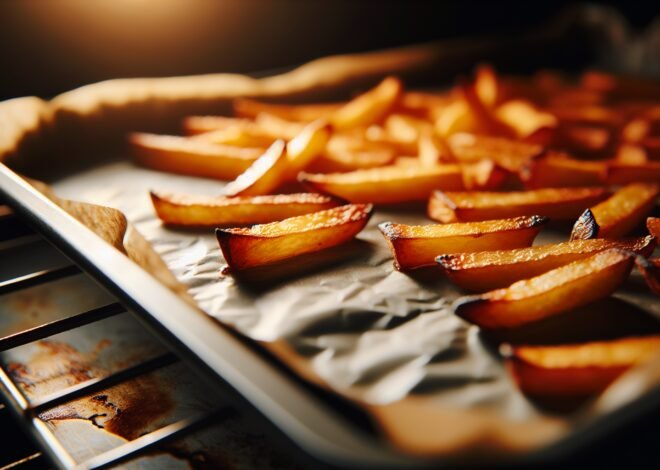
How to Set the Right Oven Temperature for Perfect Baking?
Baking success often comes down to setting the correct oven temperature. With the right techniques, you can achieve the perfect balance of texture, color, and flavor for cakes, cookies, breads, and more. Here’s a comprehensive guide on how to set the ideal oven temperature and make adjustments for various baking needs.
1. Understand the Role of Temperature in Baking
Temperature control is crucial because it influences how ingredients interact during baking. Here’s how different temperatures impact common baked goods:
- Low Temperatures (250°F – 300°F / 120°C – 150°C): Often used for slow baking or drying, low temperatures work well for delicate items like meringues, cheesecakes, and some breads.
- Moderate Temperatures (325°F – 375°F / 160°C – 190°C): Ideal for most cakes, muffins, brownies, and cookies, moderate temperatures ensure even cooking without over-drying.
- High Temperatures (400°F – 450°F / 200°C – 230°C): High heat is perfect for quickly baking items like pizzas, puff pastries, and bread crusts, creating a golden, crispy exterior.
Tips for Determining Ideal Temperatures:
- Check recipe guidelines as a starting point.
- Consider the baking time: longer baking times often require lower temperatures.
- Adjust based on texture—crispy items need higher temperatures, while soft items do best at moderate or low settings.
2. Know Your Oven’s Temperature Accuracy
Oven temperature variations are common, and even slight fluctuations can impact your results. To ensure consistency, use an oven thermometer:
- Invest in a Quality Thermometer: Place the thermometer in the center of your oven and preheat it to 350°F (175°C). After about 15 minutes, check if your thermometer reads the set temperature.
- Adjust Based on Temperature Variance: If your oven runs hotter or cooler than the set temperature, adjust accordingly. For instance, if it’s 25°F cooler, increase the temperature setting by that amount for accurate baking.
- Calibrate When Needed: Some ovens allow you to adjust or recalibrate the built-in temperature sensor. Check your oven’s manual or consult a technician for assistance.
3. Preheat the Oven Fully
A common baking error is starting without fully preheating. This is essential to ensure your baked goods cook evenly from the start.
- Preheat Time: Most ovens require 10-20 minutes to reach the correct temperature, though some digital ovens alert you when they’re ready.
- Use a Timer: Rely on a timer instead of guessing. Setting a timer after you start preheating ensures that your oven is fully ready before you begin baking.
When You Can Skip Preheating:
Certain recipes, like slow-baked dishes or some breads, don’t require precise preheating and may even benefit from a slower temperature increase. Always follow recipe instructions in these cases.
4. Adjust Temperature Based on Recipe Type
Different types of baked goods respond uniquely to temperature changes. Here’s a breakdown of recommended settings:
a. Cookies
- Standard Cookies: Bake at 350°F (175°C) for even browning and soft interiors.
- Chewy Cookies: Lower to 325°F (160°C) for a soft, chewy texture.
- Crispy Cookies: Raise the temperature to 375°F (190°C) for golden, crispy edges.
b. Cakes and Cupcakes
- Layer Cakes: Most cakes bake well at 325°F – 350°F (160°C – 175°C) for even rising.
- Dense Cakes (Pound Cake): Lower temperatures around 325°F (160°C) help avoid overly dry edges.
- Cupcakes: 350°F (175°C) is ideal for cupcakes, balancing moisture and a firm exterior.
c. Breads
- Yeast Breads: Start with a high temperature (400°F – 450°F / 200°C – 230°C) to create a crust, then reduce to 375°F (190°C) for even baking.
- Quick Breads: Bake at moderate temperatures (325°F – 350°F / 160°C – 175°C) to avoid burning.
d. Pastries
- Puff Pastry and Croissants: Bake at high temperatures (400°F – 425°F / 200°C – 220°C) for optimal lift and browning.
- Pie Crusts: Pre-bake at 400°F (200°C) for a crisp, golden base before adding fillings.
5. Consider Convection vs. Conventional Baking
Convection ovens circulate hot air, leading to faster, more even baking, which often requires temperature adjustments.
Convection Oven Tips:
- Lower Temperature by 25°F (about 15°C): When baking with convection, reduce the temperature by 25°F to avoid over-browning or drying.
- Reduce Baking Time by 10-15%: Convection baking is faster, so check your baked goods a few minutes earlier than the recipe suggests.
- When to Use Convection: It’s great for roasting or items needing crispy edges, like cookies and pastries, but avoid it for delicate cakes or soufflés, which can dry out.
6. Use Baking Racks Correctly
Rack placement impacts how heat circulates, affecting how evenly items bake. Here’s a guide on where to place your baking trays for different items:
- Top Rack: Use for items that need a quick browning or broiling, like finishing gratins or adding crispiness.
- Middle Rack: This is the best spot for even baking, ideal for cookies, cakes, and muffins.
- Bottom Rack: Use for crust-heavy items, like pizzas or breads, as the intense heat helps develop a firm base.
Multi-Rack Baking Tips:
If baking multiple trays, place them on the middle and bottom racks, rotating halfway through for even browning.
7. Make Adjustments for Different Bakeware
The material and color of your baking pans can impact oven temperature needs:
- Dark or Nonstick Pans: These absorb more heat, so lower the temperature by about 25°F to prevent over-browning.
- Glass or Ceramic: These materials heat more slowly, making them perfect for slow baking but requiring longer cook times.
- Light Aluminum: Aluminum is ideal for even heat distribution, making it versatile for most baking tasks.
8. Use Visual Cues to Check Doneness
While temperature settings provide guidance, visual cues help you identify when baked goods are perfectly done.
- Cakes: The edges should pull slightly away from the pan, and a toothpick inserted should come out clean.
- Cookies: The edges should be golden, but the centers can look slightly soft for chewy cookies.
- Breads: The crust should be firm and golden, with a hollow sound when tapped on the bottom.
- Pastries: Puff pastries and pies should be golden-brown and flaky, with visible lift.
9. Troubleshoot Common Baking Temperature Issues
If you’re experiencing problems with texture or doneness, try these solutions:
- Burnt Edges: Lower the temperature by 25°F or use lighter-colored pans.
- Raw Centers: Bake at a lower temperature for longer, or cover the item loosely with foil halfway through.
- Flat Baked Goods: Check your oven temperature and make sure the leavening agents (baking soda or powder) are fresh.
10. Practice Patience and Consistency
Baking requires consistency, so practice the following to ensure perfect results every time:
- Avoid Opening the Oven Too Often: Each time you open the door, heat escapes, which can lead to uneven baking.
- Use Timers: Set a timer based on the recommended baking time, and check just before the time is up.
- Be Patient with Cooling: Baked items continue cooking as they cool, so allow time for them to set fully before serving or decorating.
Conclusion
Setting the right oven temperature is essential for baking success, impacting texture, flavor, and presentation. By understanding your oven, selecting the proper rack position, and adjusting based on recipe type, you can bake confidently and consistently. With a little practice and attention to these details, your baked goods will turn out perfectly every time.
FAQ
1. How do I know if my oven temperature is accurate?
Use an oven thermometer to check the actual temperature. Place it in the center of your oven and set the temperature. After about 15 minutes, compare the thermometer reading to your oven setting. Adjust your temperature settings accordingly if there’s a discrepancy.
2. Should I always preheat my oven before baking?
Yes, preheating is essential for most baked goods. It ensures that they bake evenly and rise correctly. However, for some slow-baked dishes, like certain breads, you can start in a cold oven if the recipe specifies.
3. How does convection baking affect temperature and bake time?
Convection ovens bake faster by circulating hot air, so reduce the temperature by 25°F (about 15°C) and check for doneness 10-15% earlier than usual. Convection is great for crispy items but may dry out delicate cakes.
4. Where should I place baking pans in the oven?
The middle rack is best for even baking. Use the top rack for quick browning or crisping and the bottom rack for crust-heavy items, like bread or pizza. If using multiple racks, rotate pans halfway through to ensure even baking.
5. How do different types of bakeware affect oven temperature?
Dark or nonstick pans absorb more heat, so reduce the temperature by about 25°F to avoid over-browning. Glass and ceramic bake more slowly and may need extra time, while light aluminum pans provide even heat distribution for most baking tasks.
6. What are some visual cues for checking doneness?
For cakes, look for edges pulling slightly from the pan and a toothpick that comes out clean. Cookies should have golden edges and slightly soft centers for chewiness, while bread should have a golden crust and a hollow sound when tapped.











